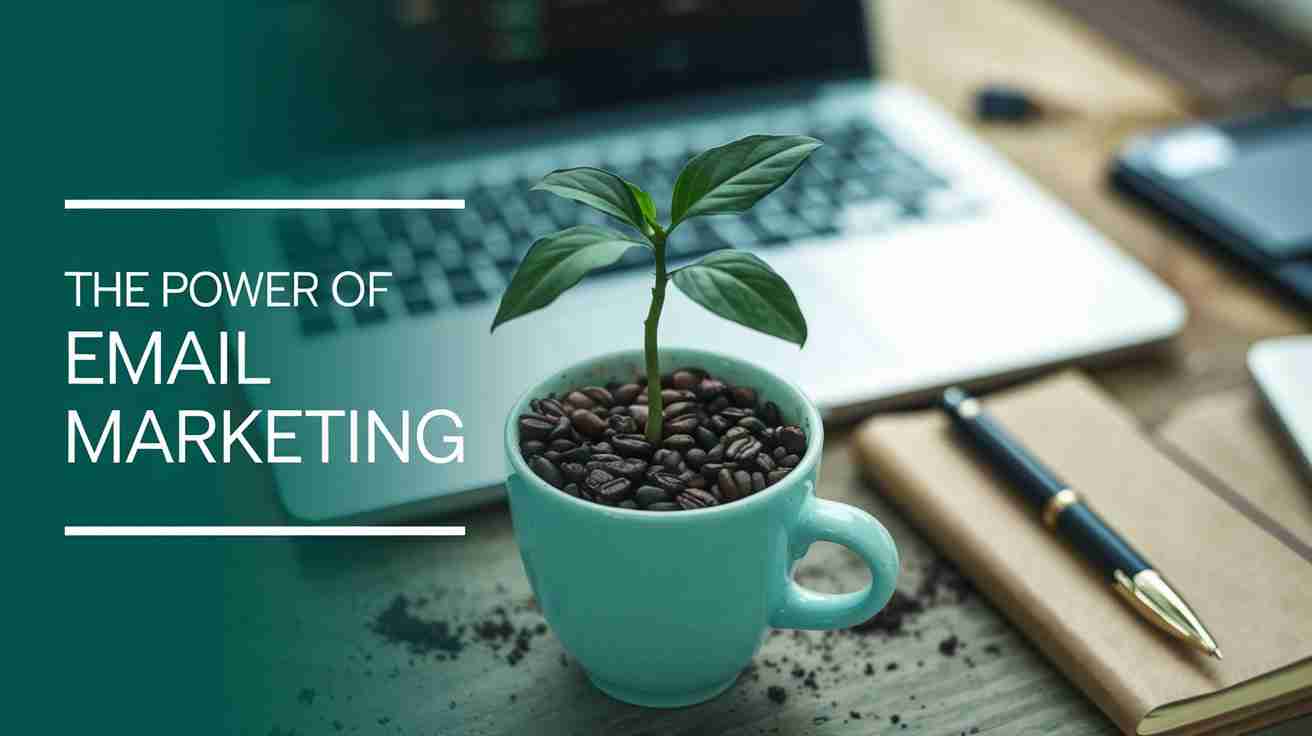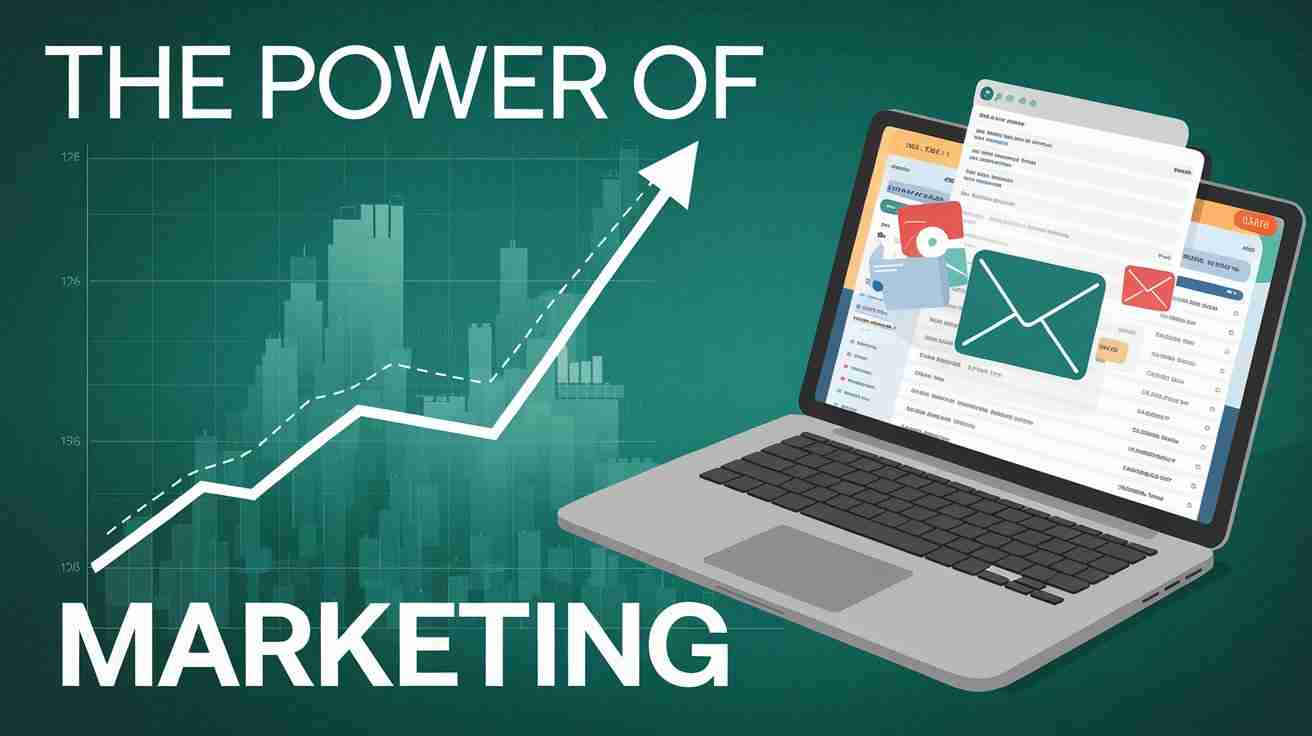The Hidden Power of Email Marketing: How Top-of-Mind Awareness Drives Business Growth
Key Benefits of Email Marketing The Power of Staying in Customers' Thoughts Building and Maintaining Top-of-Mind Awareness Impact of Top-of-Mind Awareness on Customer Behavior Subtle Reinforcement of Brand Presence Expert Opinions on Consistent Email Communication Compounding Effect of Regular Email

In a world where digital marketing channels come and go, email marketing stands as a remarkable anomaly - generating a stunning $42 return for every dollar spent. This impressive ROI isn't just about direct sales; it's about something far more valuable: maintaining a permanent spot in your customers' minds.
I've spent years analyzing marketing strategies, and I've discovered that email marketing's most overlooked superpower is its ability to create lasting mental real estate for your brand. While social media algorithms shift and paid ads costs soar, email marketing quietly builds a direct path to your audience's attention through consistent, valuable touchpoints.
Key Benefits of Email Marketing
Email marketing stands out as a smart choice for businesses looking to connect with customers effectively. For every $1 companies spend on email marketing benefits, they see an average return of $42 - making it one of the most cost-effective marketing channels available.
What makes email marketing particularly powerful is its broad reach combined with personal touch. You can send messages to thousands of subscribers while still making each communication feel individual and targeted.
The results are clear and trackable through metrics like email open rates, click-throughs, and conversions. This data helps companies understand exactly how their campaigns perform and adjust their strategy accordingly. Plus, with automated systems, businesses can maintain regular contact with their audience without intensive manual work.

The Power of Staying in Customers' Thoughts
Beyond the obvious benefits, email marketing has a subtle yet important advantage that many businesses miss: it keeps your brand fresh in customers' minds. When someone gets helpful emails from your business regularly, you become their go-to choice when they need products or services in your field.
Research shows that 59% of buyers pick brands they know well. This makes sense - we naturally trust what's familiar. Consider how Amazon uses product recommendation emails or how Airbnb sends travel inspiration. These aren't just sales pitches; they're top of mind awareness that build recognition over time.
Regular email contact creates multiple touchpoints with customers, making your brand more memorable when it's time to make a purchase decision.
Building and Maintaining Top-of-Mind Awareness
When customers think about a product or service category, being their first thought gives you a major advantage. Top-of-Mind awareness happens when your brand comes to mind immediately - like thinking of Nike for athletic shoes or Starbucks for coffee.
Email marketing makes this happen naturally through consistent contact. Each newsletter, update, or promotion puts your brand in front of customers without being pushy. I've noticed how companies like Grammarly do this well - their weekly writing updates keep users connected to their tool while offering genuine value.

The key is finding the right balance. Sending 2-5 emails monthly keeps you present in customers' thoughts without overwhelming them. Mix up your content between helpful tips, company news, and special offers to stay both relevant and memorable.
Impact of Top-of-Mind Awareness on Customer Behavior
When customers repeatedly see your emails in their inbox, it shapes their purchasing decisions in powerful ways. Studies show that people naturally pick brands they frequently interact with, even if they don't open every message. It's like having a familiar friend they can turn to when needed.
The numbers back this up - research indicates that 59% of shoppers choose brands they know over newcomers. This makes email marketing particularly effective, as each message reinforces your brand's presence. Even quick scans of subject lines keep your company in customers' thoughts.
I've seen this work firsthand with companies like Spotify, whose regular marketing trends impacting engagement make them the default choice for streaming. Each email touchpoint builds recognition, making customers more likely to pick your brand when they're ready to buy.
Subtle Reinforcement of Brand Presence
Regular email updates work quietly in the background to build brand recognition. Take Amazon's product recommendation emails - they blend helpful suggestions with gentle brand reminders. Each time customers see these personalized picks in their inbox, Amazon strengthens its position as their go-to shopping destination.
Airbnb shows how this works in practice. Their travel inspiration emails boosted bookings by 25% by sharing interesting destinations and local experiences. These messages weren't just sales pitches - they kept Airbnb in travelers' minds through engaging content.
Weekly usage summaries, like those from Get Genie AI tool, serve double duty. While showing writing stats, they remind users about the tool's value. This consistent presence makes customers think of these brands first when they need related products or services.
Expert Opinions on Consistent Email Communication
Marketing experts consistently highlight how email builds lasting customer relationships. Neil Patel points out that "Email marketing helps you stay top-of-mind with your audience," noting how consistent messaging leads to stronger brand recognition.
Ann Handley emphasizes that "Email is the only place where people, not algorithms, are in control." This direct line to customers makes email uniquely effective for maintaining regular contact.
Jay Baer backs this up with his observation that "Email is the most direct line of communication for conversion to sales." His research shows that companies maintaining steady email contact see higher customer retention rates compared to those who communicate sporadically.
I've noticed these effects in my own email campaigns - AI enhances email strategies lead to more consistent engagement and sales over time.
Compounding Effect of Regular Email Touchpoints
Small, consistent email interactions build up meaningful brand recognition over time. When customers get messages from your business, even unopened emails stick in their memory - a concept known as the Zeigarnik effect. Each touchpoint adds another layer of familiarity.
This works hand-in-hand with the mere-exposure effect, where people tend to like things they see often. Regular newsletters and updates make your brand feel more trustworthy and reliable. Think about how you feel more comfortable with brands that keep in touch versus those that only reach out to sell something.
I've found that mixing promotional content with helpful information works best. When customers get value from your emails, they're more likely to boost traffic with AI and think of your brand first.

Integrating This Benefit with Other Marketing Efforts
Email marketing works best when it connects with your other marketing activities. When customers get your emails, they're more likely to notice and interact with your social media posts. For example, sharing snippets from your blog posts in emails drives traffic back to your website while keeping your brand visible.
I've found that emails supporting content marketing efforts get better results. Including social proof, like customer reviews or user-generated content, makes your messages more believable. This builds trust across all channels.
The key is maintaining consistent messaging. When customers see the same themes in your emails, social posts, and website content, it creates a clear picture of your brand. Plus, email lists help you target Facebook Ads campaigns more effectively by creating lookalike audiences based on your subscribers.
Maximizing Top-of-Mind Awareness Through Email
The sweet spot for email frequency sits between 2-5 messages per month for most businesses. This keeps your brand present without causing subscriber fatigue. I've found success mixing different content types in my campaigns - promotional offers, how-to guides, and industry updates all play their part in keeping subscribers engaged.
Personalization makes a big difference too. Adding customer names and tailoring content based on past interactions makes messages feel more relevant. When I segment my email lists by customer interests and behaviors, open rates typically increase by 15-25%.
Testing different send times and subject lines helps optimize these efforts. The data shows that emails sent during work hours (9 AM - 5 PM) tend to get better engagement rates than those sent outside business hours.
Measuring the Impact of Increased Brand Recall
Brand lift studies offer clear insights into how email campaigns affect customer awareness. When tracking email performance, I focus on three key metrics: direct conversions from email clicks, assisted conversions where emails played a supporting role, and changes in branded search volume.
Google Analytics helps track how often customers who received emails later search for your brand name. I've noticed that consistent email open rate trends often lead to a 15-20% uptick in branded searches within 3-4 months.
Multi-touch attribution models show how emails work with other marketing channels. By analyzing customer journeys, you can see when email touchpoints influenced buying decisions. Track metrics like forward rates and social shares too - they indicate how memorable your content is to subscribers.
Examples and Case Studies
Uber's location-based email campaigns increased ride bookings by 11% by sending targeted prompts when customers were most likely to need transportation. The emails considered factors like time of day and past riding patterns.
Spotify's yearly wrapped emails show the power of personalized content. Their end-of-year summaries generate massive social sharing and app opens, with users eager to see and share their listening stats. This annual tradition keeps top of mind awareness well beyond the initial email.
Grammarly's weekly writing updates demonstrate effective regular contact. By showing users their writing stats and improvement over time, these emails remind subscribers about the tool's value while providing useful insights. Their good email open rates average 50% higher than industry standards.
These real-world results show how consistent, value-focused email campaigns build lasting brand recognition and drive measurable business results.
Addressing Objections and Skepticism
Some marketers worry about email fatigue, wondering if regular messages might annoy subscribers. However, data shows that proper list segmentation and relevant content prevent subscriber burnout. When emails match subscriber interests, open rates stay strong.
Others question if email still works in today's social media world. The numbers tell a different story - email continues to outperform social platforms in engagement and sales. A recent study found email marketing generates $42 for every dollar spent, far exceeding other digital channels.
Measuring long-term brand impact presents another challenge. AI enhances email marketing tools now track how email interactions lead to future purchases. Companies can see clear patterns between consistent email contact and increased customer loyalty over time. I've found that regular testing and metrics tracking helps optimize campaign performance and prove email's worth in the marketing mix.
Crafting Emails for Brand Reinforcement
Consistent branding elements in every email help customers instantly recognize your messages. I've found that using the same logo placement, color scheme, and font styles creates a familiar visual identity that sticks in readers' minds.
The 80/20 rule works well here - 80% helpful content, 20% promotional material. For example, a real estate agent might share local market updates and home maintenance tips, while subtly featuring their latest listings at the bottom.
Stories make your brand stick. Rather than just announcing a new product, share the customer problem it solves. When writing subject lines, I focus on clear benefits instead of sales language. Simple touches like signing off with a team member's name add personality and build connections with readers.
A mix of images, text, and interactive elements keeps subscribers engaged without overwhelming them.

Psychological Aspects of Top-of-Mind Awareness
When customers receive regular emails, their brains process this information in predictable ways. The availability heuristic shows that people make decisions based on information they can quickly recall. Each email puts your brand at the front of their memory.
Studies show that familiar brands get processed more easily by our brains. This mental shortcut, called cognitive fluency, makes customers more likely to pick products they've seen in their inbox multiple times.
The psychology behind repeated email contact follows the elaboration likelihood model. Even quick glances at subject lines create mental pathways that affect future buying choices. I've noticed that subscribers who open just 30% of emails still pick those top of mind brands first when shopping.
Application Across Industries
E-commerce companies send product recommendation emails based on customers' browsing patterns and past purchases. Online retailers like Amazon find success with abandoned cart reminders and personalized suggestions, seeing 15-25% higher sales from subscribers.
Service providers build loyalty through tips and advice emails. A personal trainer might share workout guides and nutrition tips, keeping clients engaged between sessions. These helpful messages make them the natural choice when clients need related services.
B2B companies use thought leadership content to showcase expertise. Regular industry insights and case studies position them as trusted advisors. Small local businesses connect through community updates and event announcements, making their brand part of customers' daily lives.
I've seen companies like Grammarly blend these approaches, mixing marketing trends impacting engagement with writing tips to keep users active and interested.
The Lasting Impact of Strategic Email Marketing
The evidence is clear - email marketing's ability to keep your brand top-of-mind represents one of its most powerful yet underappreciated benefits. Through consistent, value-driven communication, companies can build lasting mental associations that transform casual subscribers into loyal customers. The key lies in striking the right balance between frequency and value.
Looking ahead, as digital marketing continues to evolve, email's role in maintaining brand presence will only grow more crucial. By focusing on creating meaningful touchpoints rather than just driving immediate sales, businesses can leverage email marketing to build sustainable, long-term relationships that keep their brand front and center in customers' minds.
